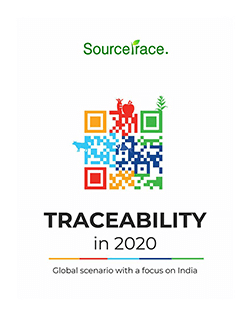How digital agriculture meets sustainable development goals?

It is estimated that by 2050 the population will reach a whopping 9.7 billion people. To feed them, food production must rise by 98%[1]. Moreover, climate change threatens weather-dependent agriculture with irregular rainfall patterns, floods, and droughts. Current food production methods produce 25% of global greenhouse gas emissions, worsening climate change[2]. Agriculture has a big environmental impact since it consumes dwindling natural resources like fresh water. We can’t boost food production by cultivating more land without triggering deforestation. Smallholder farmers generate 30–34% of the world’s food. Low production, poor efficiency, and climate change consequences are the obstacles. Their output must rise to end world poverty[3]. Applying technology, digital, and innovation can make agriculture more environmentally, economically, and socially sustainable for future generations.
How tech can help achieve sustainable development goals?
Each SDG can be considerably advanced by using digital technologies:
SDG 1 – Zero poverty
Access to digital financial services can help raise people out of poverty, yet more than 2 billion people don’t have bank accounts. The Financial Inclusion Global Initiative (FIGI), launched in 2017 by ITU, the World Bank, and the Committee on Payments and Market Infrastructures (CPMI), extends digital financial inclusion in developing nations.
SDG 2 – Quality education
In order to support the first-ever, comprehensive UN system-wide effort for the promotion of youth employment globally, ITU and the International Labour Organization (ILO) are leading the Digital Skills for Decent Jobs Campaign, which aims to equip 5 million young men and women with job-ready digital skills by 2030. The ITU and UNICEF-led Giga Initiative oversee and encourage connection in schools.
SDG 3: Zero hunger
ICT-enabled solutions can enhance crop yields and reduce energy use by making farming more data-driven and efficient. Since 2017, the UN Food and Agriculture Organization (FAO) and ITU have collaborated closely to support ICT innovation in agriculture.
SDG 4: Good health and well-being
Better connectivity improves patient engagement, health informatics, and telemedicine. ITU and WHO’s “Digital Health for Africa” partnership has helped 15 African countries build digital health leadership. Be Healthy, Be Mobile, another ITU-WHO collaboration, manages the mHealth Knowledge and Innovation Hub in Europe (health-hub.org). Current and future ITU standards for multimedia systems, established with other organizations, will facilitate digital health applications including telemedicine and remote medical imaging.
SDG 5: Sustainable energy
Rising tech use increases greenhouse gas emissions. The industry is exploring ways to use greener energy, make gadgets more energy-efficient, and incorporate solar, wind, and other renewable sources. Cutting-edge tech is needed to reduce global emissions, construct smart grids and cities, electrify transport, and build sustainable economies and civilizations. ITU helped develop stricter energy efficiency and emission control requirements for ICTs and highlighted how smart grids may build more controllable and efficient energy systems and cut carbon emissions.
SDG 6: Gender equality
In 2017, 250 million fewer women than males were online, according to ITU. 62% of men and 57% of women globally use the Internet. The digital gender gap has narrowed in all geographical regions and is practically erased in the industrialized world, but it persists in LDCs (where 31% of men and 19% of women are online) and Landlocked Developing Countries (where 38 percent of men compared to 27 percent of women). ITU members organize International Girls in ICT Day to encourage women and girls to pursue STEM fields. EQUALS is a ground-breaking global network to improve women’s access to technology, create relevant digital and other skills, and encourage female leadership in the IT sector.
SDG 7: Improved Infrastructure
A significant portion of ITU’s activity is directed toward expanding networks into underserved remote and rural areas and enhancing the size and quality of the ICT infrastructure supporting radiocommunication and backbone networks. The performance and energy efficiency of ICT networks, including backhaul, wireline, and radiocommunication networks, are being improved through ITU standards.
SDG 8: Aquatic life
ICTs are widely employed to track how the maritime environment is changing (e.g., the movement of ice flows and glacial movements). Remote monitoring capabilities can be added to buoys to keep track of shifting ocean conditions (e.g., salinity levels of water via buoys). To learn about the migratory patterns and demands of endangered creatures like whales and dolphins, sensor networks and RFID chips can be utilized to safeguard them.
Conclusion
As more individuals turned to the internet amid lockdowns and imprisonment to continue working, studying, and staying in touch with friends and family, the COVID-19 pandemic has improved connectivity. The challenges posed by the pandemic and the recession in the economy, however, present further obstacles to reaching the SDGs. The worldwide community has vowed to “build back better” by taking lessons from the pandemic’s global challenge. ICTs and improved connections may play a significant role in rebuilding society. Through improved citizen engagement and expanded connectivity, nations can further the SDGs.
AI, blockchain, cloud computing, and IoT are already making an impact in various sectors and might revolutionize food and agricultural systems globally . Precision agriculture technologies employing AI can increase farming’s resource efficiency and productivity. Blockchain systems combined with IoT can improve supply chain traceability. Alternative proteins can lessen conventional meat production’s environmental impact.
Sourcetrace explores existing and emerging technologies that can help food systems become more sustainable and resilient, sharing knowledge and building capacity to help UNDP’s field offices, policymakers, and other stakeholders understand these technologies and their applications, including the opportunities and challenges they present, and building multi-stakeholder partnerships to support their large-scale adoption, especially in developing countries.
SourceTrace's software solutions have been deployed across 37 countries and 4 continents already. We are on a mission to make agriculture and food systems more sustainable. Get in touch and we will extend our expertise and commitment to you.
Request a Demo


